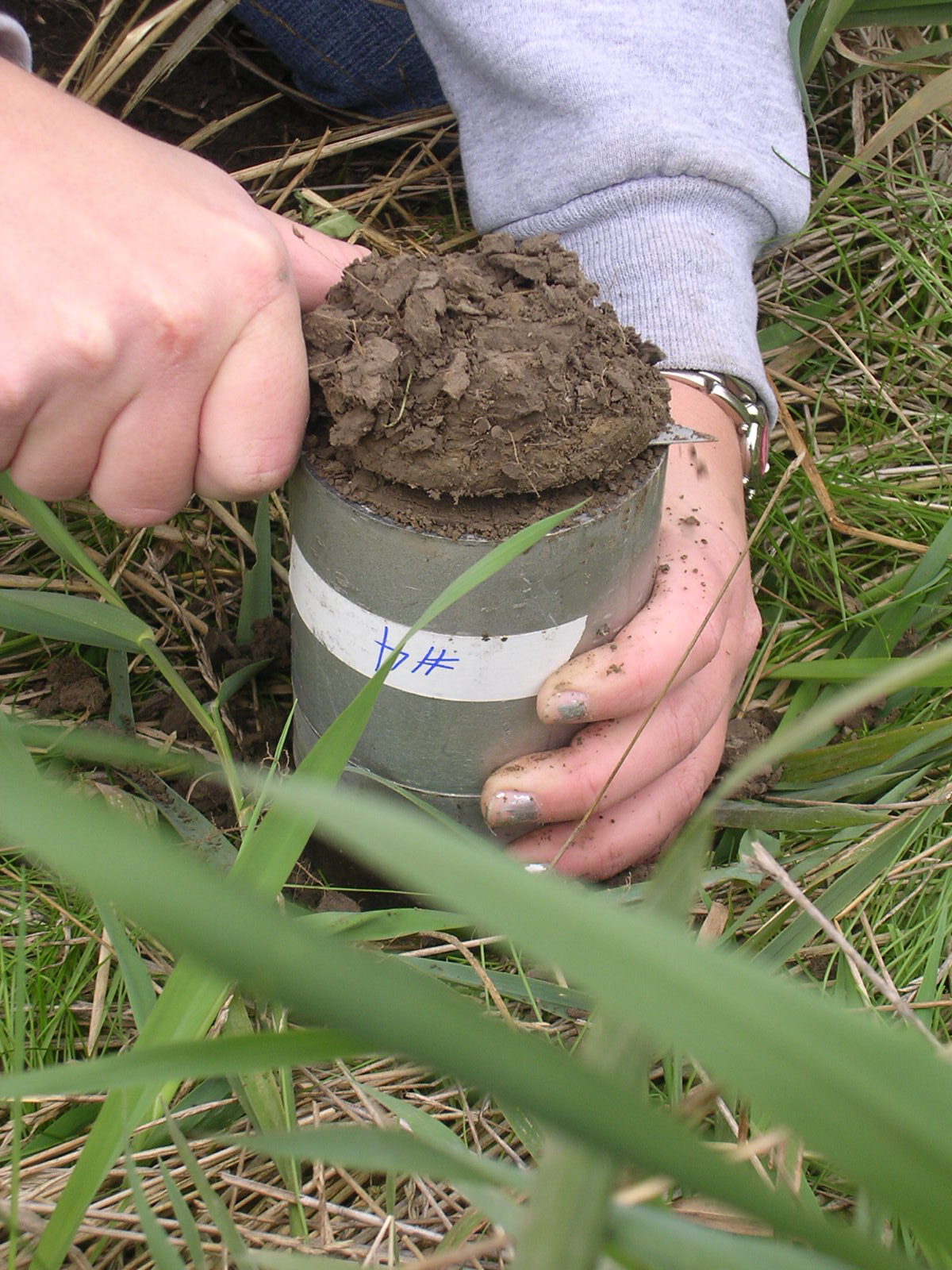How Should You Collect Soil Samples to Calculate Carbon Stock?
This article was adapted from “Sampling Design for Quantifying Soil Organic Carbon Stock in Production Ag Fields” first published on Dec 3, 2021, in Crops & Soils magazine.
The short answer: calculating soil carbon stock requires sampling for organic carbon concentration, bulk density, and coarse fragments. Collecting these three measurements to get the accurate carbon stock for your fields takes careful planning to balance labor, time spent, and cost with the number of soil samples you need to get a representative sample.
Soil Organic Carbon (SOC) Concentration
Collecting samples for soil organic carbon (SOC) concentration uses the same procedure as soil fertility testing. It means collecting a composite sample to a fixed depth, striving for a representative soil sample that is not impacted by variations in SOC concentration.
- To get a representative sample, combine 10-20 cores from a 15-ft radius circle on homogenous soil (same soil series, slope, management zone, etc) in a bucket, mixing to create a composite.
- For soil fertility testing, taking cores from 0-15 cm depth is sufficient. But voluntary carbon markets are moving toward requiring samples taken from 0-30 cm depth. Pay careful attention to the required sampling depth.
Bulk Density

A bulk density sample is cleaned to remove excess soil from the core bottom. The sampler is designed to extract this excess to prevent sample compression. Photo courtesy of Nick Balster, University of Wisconsin-Madison.
Here’s where things start to change compared to your typical soil fertility tests. Bulk density is the measure of the mass of soil contained in a certain volume. This requires collecting a known volume of soil, then drying the sample to collect the oven-dry mass.
- These soil cores need to be large—you’ll need a tool like a slide hammer that you’ll pound into the ground or a hydraulic coring machine. Use the largest diameter of soil core you can—the Soil Health Institute uses a 3-inch corer.
- Avoid compacting the soil as you collect the sample.
- Sample when the field is no wetter than field capacity (in fact, slightly drier is ideal).
- Do not sample after recent tillage.
- Collect two depths—one sample from 0-15 cm, and another from 15-30 cm.
Taking bulk density samples is labor intensive. The Soil Health Institute recommends collecting one bulk density sample per composite soil organic carbon concentration sample. Take extra care! It’s your one shot to get a good, accurate bulk density sample.
Coarse Fragments
Coarse fragments are particles greater than 2 mm in diameter. If your soil has coarse fragments—but they don’t hinder collection of bulk density samples—then taking bulk density cores is good enough to get an accurate measure.
- SHI also recommends considering if taking more cores will improve the accuracy of the coarse fragment estimate.
- But if so many coarse fragments are in your soil that it makes taking bulk density difficult, it’s time to try excavation.
Once you have your samples, it’s time for analysis and calculation of SOC stock. Overall, remember that taking samples to calculate your soil carbon stocks is a balancing act between collecting enough samples to get an accurate measure, while avoiding sending half the field to the lab.
Photo by ACES | Kim Mullenix courtesy of Alabama Extension.








